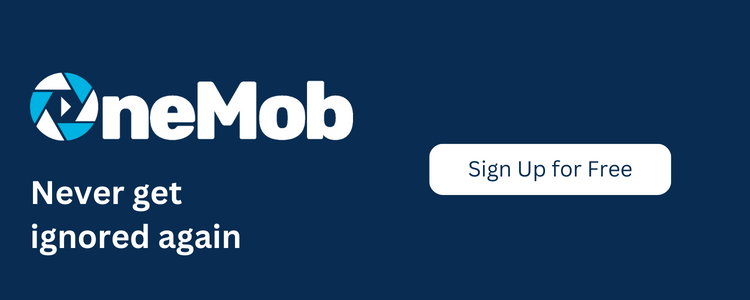Section 1: The Power of Cold Canvassing
Sub-section 1.1: Understanding Cold Canvassing
Cold canvassing, also known as cold calling or cold prospecting, is a sales technique where sales professionals reach out to potential customers who have no prior knowledge or interaction with their product or service. It involves making unsolicited contact with prospects to introduce and promote offerings, with the aim of generating new business opportunities. This approach requires a proactive mindset, effective communication skills, and a solid understanding of the target market.
Sub-section 1.2: The Benefits of Cold Canvassing
Cold canvassing offers several advantages for sales development representatives (SDRs) and sellers. Firstly, it allows for direct and personalized interactions, enabling the salesperson to tailor their message to the specific needs and pain points of each prospect. This personalized approach can create a sense of trust and credibility, increasing the chances of conversion.
Secondly, cold canvassing provides an opportunity to expand the reach of a product or service. By reaching out to potential customers who may not be actively seeking a solution, sales professionals can tap into new market segments and uncover hidden sales opportunities. This can help businesses grow their customer base and increase revenue.
Sub-section 1.3: Cold Canvassing Strategies
Successful cold canvassing requires a well-planned strategy. Here are some key strategies to consider:
- Research and Targeting: Before reaching out to prospects, conduct thorough research to identify the right target audience. Understand their pain points, challenges, and needs to tailor your message effectively.
- Effective Communication: Craft a compelling pitch that highlights the value proposition of your product or service. Focus on how it solves the prospect’s problems and delivers tangible benefits.
- Building Rapport: Establishing a connection with the prospect is crucial. Show genuine interest, actively listen, and engage in meaningful conversations to build rapport and trust.
- Follow-up and Persistence: Cold canvassing often requires multiple touchpoints before achieving a response or conversion. Follow up consistently and persistently, adjusting your approach based on prospect feedback.
Implementing these strategies can greatly enhance the effectiveness of your cold canvassing efforts and improve your conversion rates.

Remember, cold canvassing requires patience and resilience. It may take time to see significant results, but with the right approach and continuous refinement, it can be a powerful tool for generating new business opportunities and expanding your customer base.
Section 2
Welcome to Section 2 of our exploration into the fascinating world of cold canvassing. In this section, we will delve deeper into the strategies and techniques that can help you succeed in this challenging but rewarding sales approach. Let’s explore Sub-section 2.1, Sub-section 2.2, and Sub-section 2.3.
Sub-section 2.1: Targeting the Right Prospects
When it comes to cold canvassing, identifying and targeting the right prospects is crucial. You want to focus your efforts on individuals and companies who are most likely to be interested in your product or service. Conducting thorough research and creating an ideal customer profile can help you narrow down your target audience.
Key Points:
- Segment your market based on demographics, industry, company size, and other relevant criteria.
- Identify pain points and challenges that your product or service can address.
- Look for prospects who have shown interest in similar solutions or have a demonstrated need for your offering.
- Use tools like customer relationship management (CRM) software to track and manage your prospecting efforts.
Sub-section 2.2: Crafting Compelling Outreach Messages
Once you have identified your target prospects, the next step is to craft compelling outreach messages that grab their attention and pique their interest. Cold canvassing often involves reaching out to individuals who may not be expecting your contact, so it’s essential to make a strong impression from the get-go.
Key Points:
- Personalize your messages to show that you have done your research and understand the prospect’s needs and challenges.
- Clearly communicate the value proposition of your product or service and how it can benefit the prospect.
- Keep your message concise and focused, highlighting the most important information.
- Include a clear call-to-action that prompts the prospect to take the next step, such as scheduling a meeting or requesting more information.
Sub-section 2.3: Overcoming Objections and Building Rapport
During the cold canvassing process, you are likely to encounter objections and skepticism from prospects. It’s important to anticipate common objections and have well-prepared responses to address them effectively. Building rapport with your prospects can also go a long way in establishing trust and credibility.
Key Points:
- Practice active listening to understand the prospect’s concerns and objections.
- Anticipate common objections and prepare persuasive responses to overcome them.
- Focus on building a genuine connection with the prospect, showing empathy and understanding.
- Share success stories and testimonials to build credibility and demonstrate the value of your offering.
Remember, cold canvassing requires persistence and resilience. Not every prospect will be ready to engage with you immediately, but by targeting the right prospects, crafting compelling messages, and building rapport, you can increase your chances of success.
Section 3: Cold Canvassing Techniques
Sub-section 3.1: Introduction to Cold Canvassing
Cold canvassing is a sales technique that involves reaching out to potential customers who have had no prior interaction with your business. It is a proactive approach where sales representatives or account managers initiate contact with prospects to generate leads and explore new business opportunities. Cold canvassing can be done through various channels, such as phone calls, emails, social media, or even in-person visits.
When done effectively, cold canvassing can yield impressive results, allowing businesses to expand their customer base and increase revenue. However, it requires careful planning, a compelling value proposition, and effective communication skills to grab the attention of prospects and turn them into potential customers.
Sub-section 3.2: Strategies for Successful Cold Canvassing
Successful cold canvassing involves a combination of smart strategies and persuasive techniques. Here are a few key strategies to consider:
- Research and Targeting: Before reaching out to prospects, it’s crucial to conduct thorough research to understand their needs, pain points, and how your product or service can provide a solution. By targeting the right audience, you can tailor your message and increase the chances of a positive response.
- Personalization: Generic, mass-sent messages rarely yield favorable results. Personalizing your outreach by referencing specific details about the prospect’s business, industry, or recent activities can help establish a connection and show that you’ve put effort into understanding their needs.
- Compelling Value Proposition: Clearly articulate the unique value that your product or service brings to the table. Highlight the benefits, address pain points, and explain how your offering can make a significant impact on their business.
- Effective Communication: When cold canvassing, it’s essential to be concise, confident, and engaging. Craft a compelling opening statement that grabs the prospect’s attention and clearly communicates the purpose of your outreach. Use active listening skills to understand their needs and tailor your pitch accordingly.
Sub-section 3.3: Overcoming Challenges in Cold Canvassing
Cold canvassing can come with its fair share of challenges. Here are some common obstacles that sales professionals may face and strategies to overcome them:
- Rejection: Cold canvassing can result in rejection, as not every prospect will be interested or ready to engage. It’s important to develop resilience and not take rejection personally. Use each rejection as an opportunity to learn and refine your approach.
- Gatekeepers: In many cases, you may encounter gatekeepers who act as a barrier between you and the decision-maker within an organization. Build rapport with gatekeepers, understand their role, and demonstrate the value of your offering to increase your chances of getting through.
- Timing: Timing plays a crucial role in cold canvassing. Prospects may not be receptive if they are busy or facing other challenges. Pay attention to timing and be respectful of their schedule. Consider following up at a more suitable time to increase your chances of success.
- Competition: In a competitive market, prospects may already be working with other vendors or have established relationships. Differentiate yourself by highlighting the unique value you bring and how it sets you apart from the competition.
Cold canvassing requires persistence, adaptability, and a willingness to learn from each interaction. By employing effective strategies, overcoming challenges, and continuously refining your approach, you can maximize your chances of success in generating leads and expanding your customer base.








